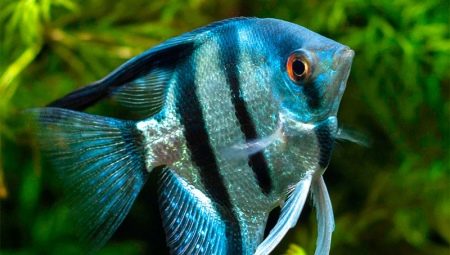The unearthly beauty and grace of scalars cannot but arouse admiration. Both for beginners and experienced aquarists, these charming creations are popular not only because of their unusual appearance, but also because of their amazing unpretentiousness. What should be known about scalars to those people who plan to have them in their home pond? How to contain, what to feed and how to breed these fish? What problems may arise in their content?
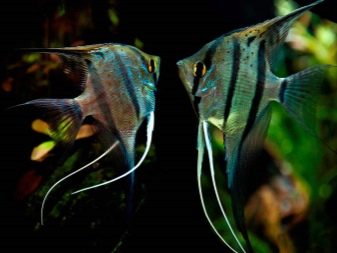

Description
Angelfish are one of the most beautiful and interesting representatives of the cichl family. Their natural habitat is freshwater in South America. In the wild, they inhabit water bodies densely overgrown with reeds, where a moderate and smooth flow is noted. These fish are found in bodies of water with stagnant water.
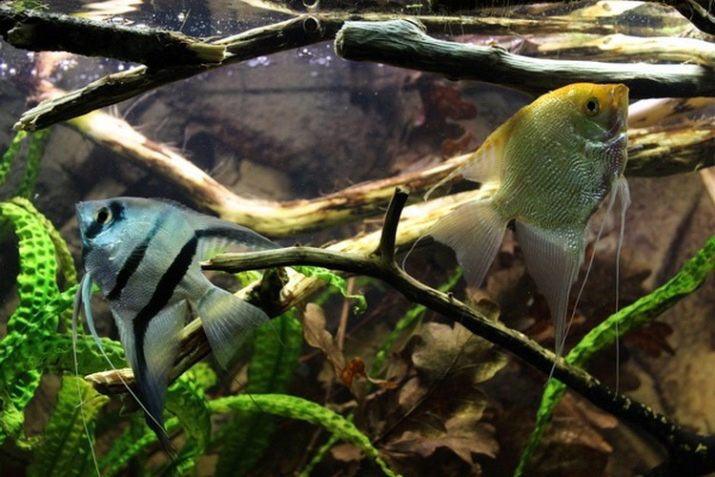
Being schooling fish, angelfish prefer to stay in small groups. In one flock there can be about 10–20 individuals and more.
The body of the scalar is flattened, disc-shaped, elongated vertically. This body structure allows the fish to easily maneuver in the water column between the reed and algae thickets, and camouflage themselves in the grass from large predators.
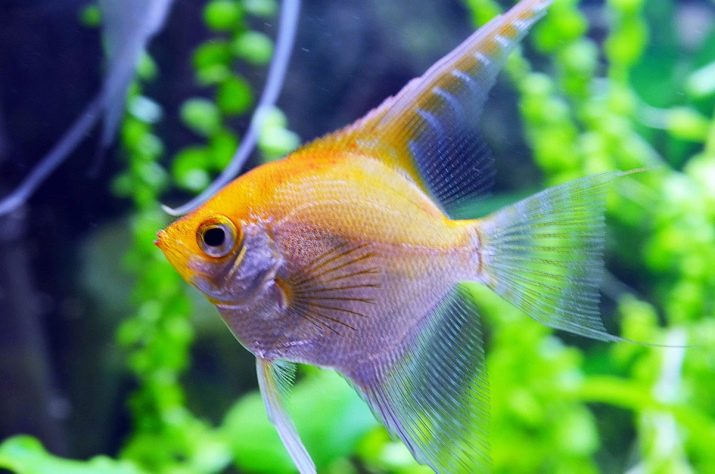
The long (facing the tail) dorsal and anal fins give the body of the fish the outlines of a lunar sickle. The body length of scalars living in the wild can reach 10-15 and even 20 centimeters. However, when kept in home aquariums, fish usually do not grow large. On average, their body length varies between 8-10 centimeters.
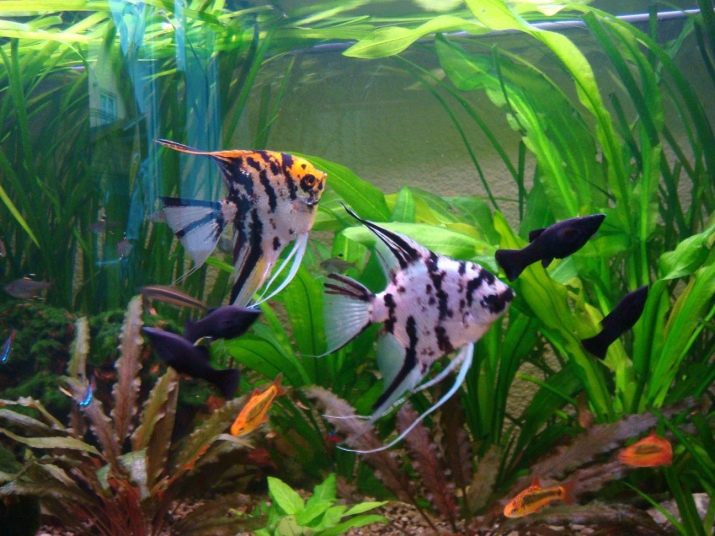
The initial (classic) color of wild scalars is gray-silver with a metallic sheen, diluted with dark stripes extending across the body. To date, breeders from the original species have received many unique forms of scalars of various colors. In the palette of colors of breeding forms, marble, zebra, spotted, leopard and tiger variations are found. The scalars of pearl-pearl, golden, silver, pale blue, orange-red, anthracite-black and pink colors look very impressive. A fantastically beautiful GloFish form was also developed, the color of which becomes saturated in the ultraviolet stream.
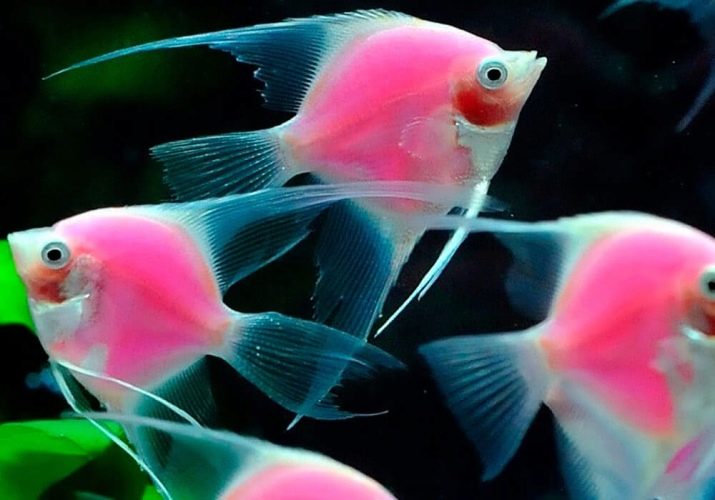
No less fascinating are scalars with long veil fins that flutter effectively when the fish move in the water column. Fins can be either translucent, almost colorless, or mottled, bright, plain, striped or spotted.

The forehead and back of adults are darker (compared to young fish) in color. Scalaria are considered mature when they reach the age of 9-12 months.
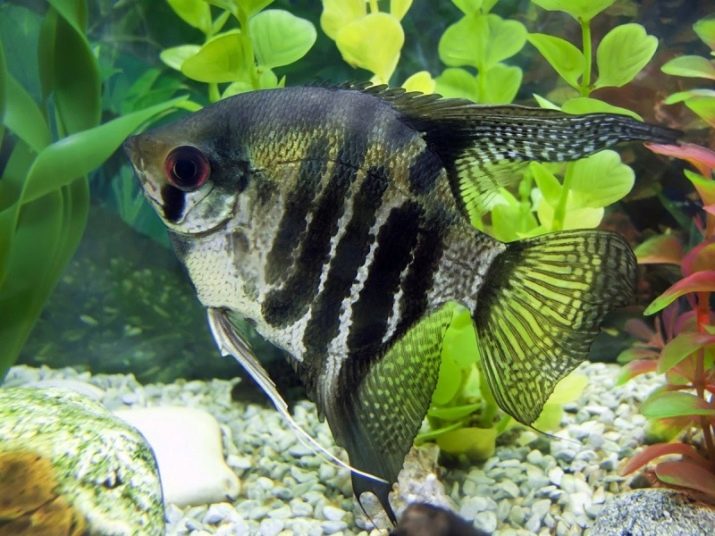
To distinguish a female scalar from a male inexperienced person is quite problematic due to the fact that sexual dimorphism in these fish is poorly manifested. The main landmarks here are behavior, forehead shape, location of dorsal and anal fins. For males, activity and agility are more characteristic. In the aquarium, they usually chase females (this becomes especially noticeable during the mating season). The forehead in male scalar has a clearly distinguishable bulge. The abdominal line in them smoothly passes into the anal fin, and the line of the back is at a noticeable angle to the dorsal fin.
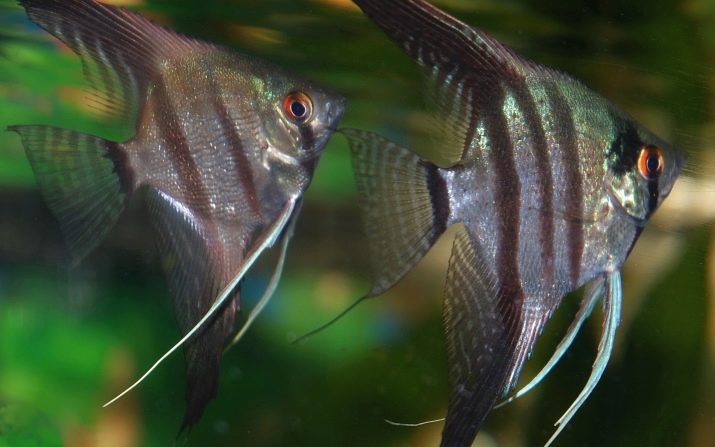
Despite the fact that these aquarium fish, like all representatives of the cichlidae family, are predators, they are distinguished by a very friendly and non-conflict disposition.
It is worth noting that many types of scalars often become victims of their more aggressive neighbors, damaging their beautiful long fins.
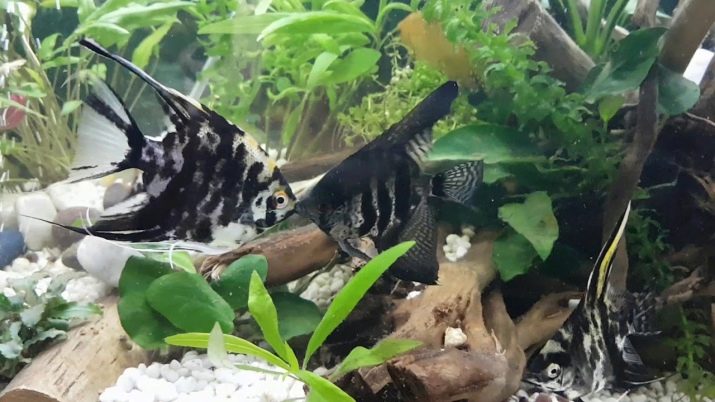
Kinds
The genus of these elegant fish includes three main species: common scalar, Leopold scalar and Altum scalar.
- Altum is the largest representative of this genus found in tributaries of the Orinoco. In the natural habitat, fish of this species reach about 40 centimeters or more in height.
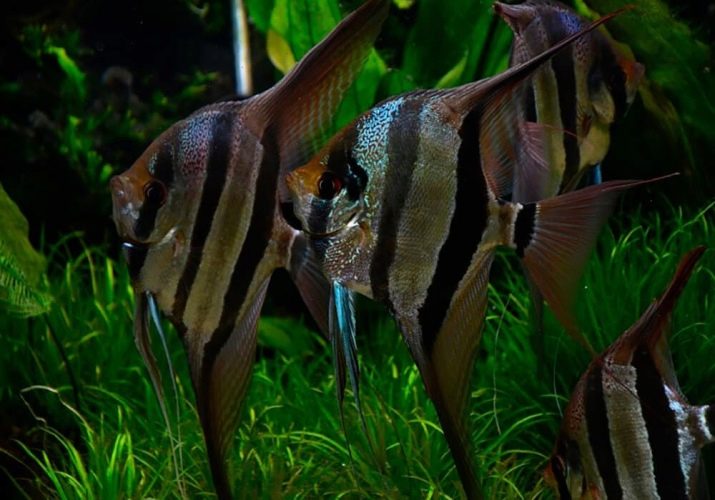
Fish of this species have a large and beautiful body, elongated in height. Altum fins have a noticeable reddish tint. Wide dark stripes run across the body, smoothly passing to the dorsal and anal fins.
Among foreign aquarists, altums are valued for their stamina, unpretentiousness, omnivorousness, and peaceful disposition. Despite their impressive size, they do not show aggression to other inhabitants of the aquarium. In Russia, this species of fish has not yet been bred.
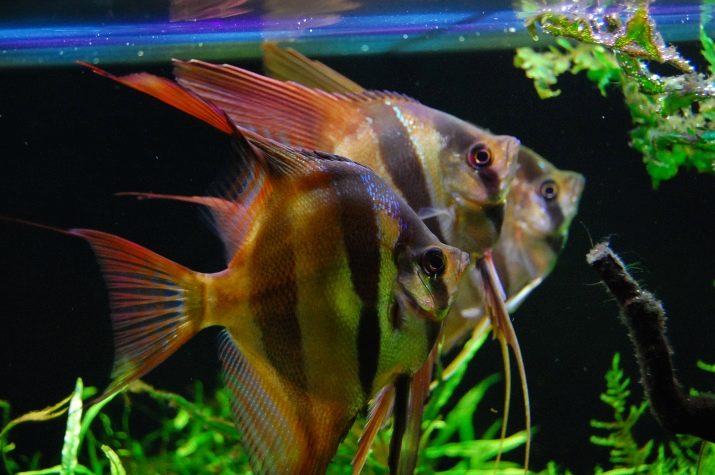
- Another interesting view are Leopold's scalarsbeing the smallest representatives of a kind. The body size of these fish is about 10 (less often - 12-15) centimeters. The body color is gray-silver, has a metallic tint. Broad dark stripes run across the body. A distinctive feature of the representatives of this species is the presence of a dark rounded mark under the dorsal fin.

These are very peaceful fish with a good-natured disposition, able to get along with not very large inhabitants of the aquarium. Small neighbors with a non-conflict, calm nature can become good neighbors for them.
- The most popular species in aquariums are scalars - common scalarsthat are still used by breeders to breed new fish species.
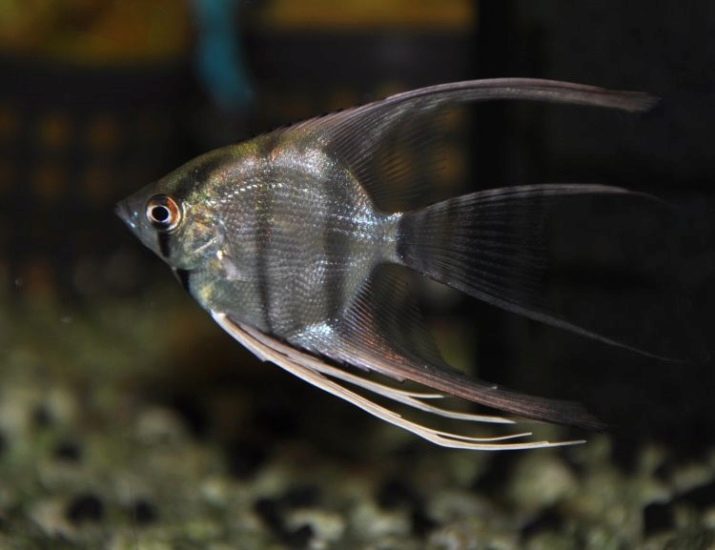
Below are descriptions with the names of the most interesting forms obtained as a result of breeding.
- Bicolor is a very beautiful breed of scalar of two-tone color. The head and front half of the body of these fish are painted in pearl silver color, the rear half and the tail fin - in coal black. Dark vertical stripes on the light part of the body are absent or almost invisible. If the stripes begin to acquire an intense dark color, the cost of the fish is significantly reduced. Bicolor scalars with large veil dorsal, anal and caudal fins look very impressive.
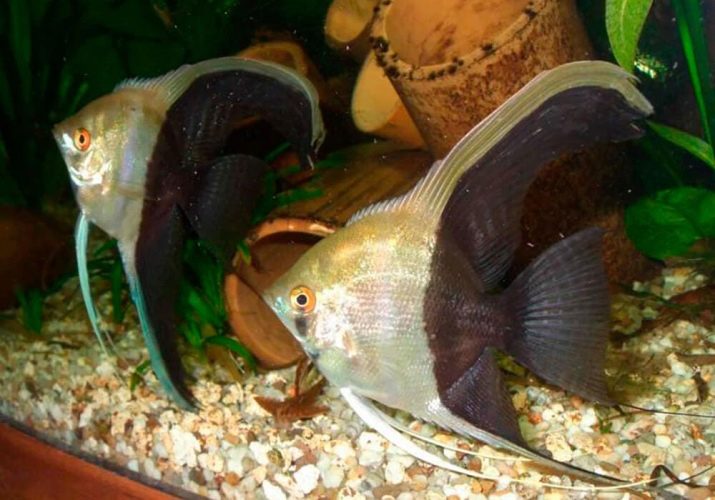
- Diamond (diamond) - A spectacular breed of scalar, notable for its dazzling bright silver body color. In the light, the small specular scales of these fish shimmer and shine. The size and shape of the body are standard for fish of this species, the fins are translucent, repeating the main body color.

Breeders bred various variations of diamond scalars with silver, gold, bluish, pinkish tints. Diamond scalars with luxurious veil fins fluttering in the water like sails look very nice.
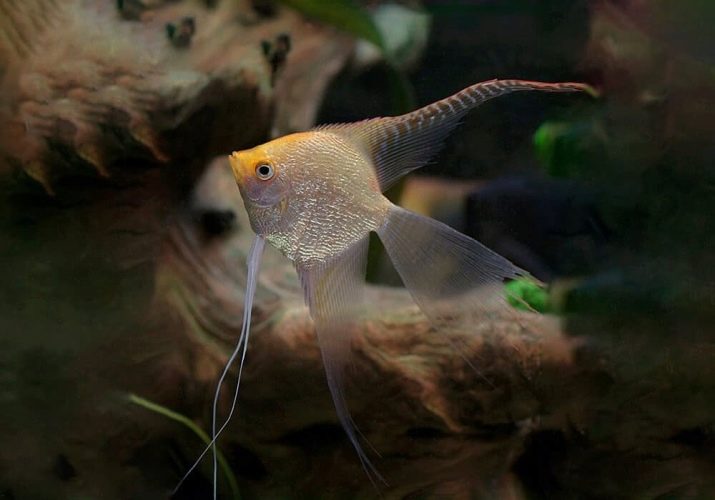
- "Blue Angel" - A very attractive and unusual breed, the representatives of which have the original pale turquoise or light blue body color. Against the background of emerald green aquarium, these fish look very impressive.
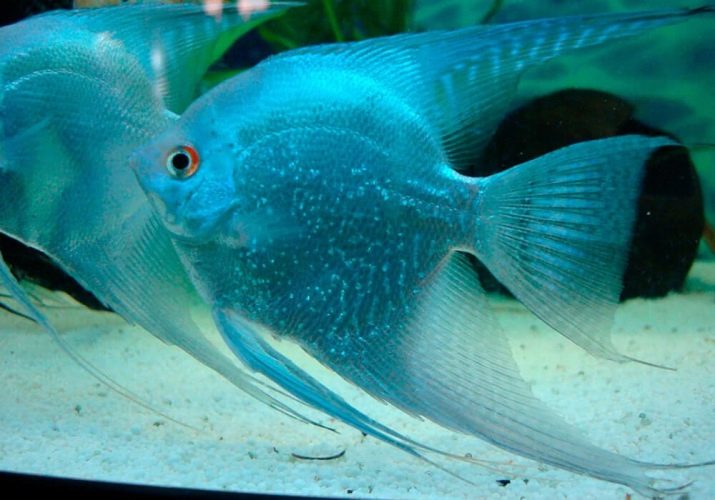
The average body size of the scalar of this breed is about 10 centimeters. The pectoral fins are thin, threadlike. Dorsal, caudal and anal fins - large, straightened, sailing or conical in shape. Fishes of this breed, like other representatives of this genus, are distinguished by a peaceful and calm disposition, they easily get along with other aquarium inhabitants.
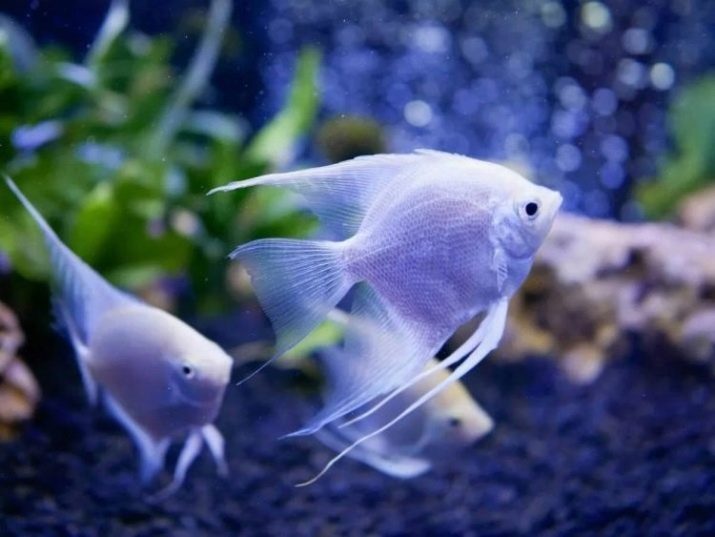
- Koi - one of the most striking and original breeds of scalars, the coloring of which cannot but cause admiration. The pinkish-white body and head of these fish is decorated with black, red-orange, coral marks. Dorsal, pectoral, anal and caudal fins - translucent, light shade. Color fins or stripes are allowed on the fins.
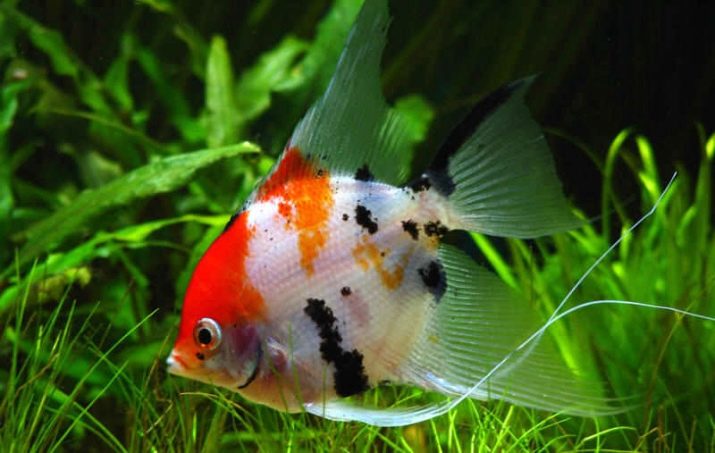
- Marble Scalar - Another spectacular representatives of the aquarium fauna obtained in the process of breeding work from ordinary scalars. Noteworthy for their unpretentiousness, small size, undemanding to the conditions of detention and care.

The color of the fish is represented by a combination of coal black and light pearl colors, combined in an intricate pattern. Visually, the color of these fish resembles the colors of natural marble.
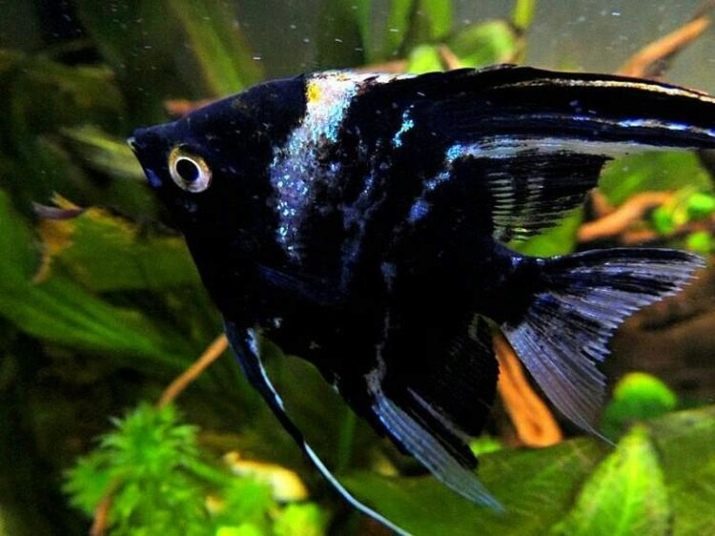
How many live in an aquarium?
The life expectancy of these fish in the wild can reach 20 or more years. However, in captivity, scalars live significantly less - about 10-15 years.
Experienced aquarists argue that it is possible to extend the life of fish contained in an artificial pond if you create conditions for them that are as close as possible to their natural habitat.
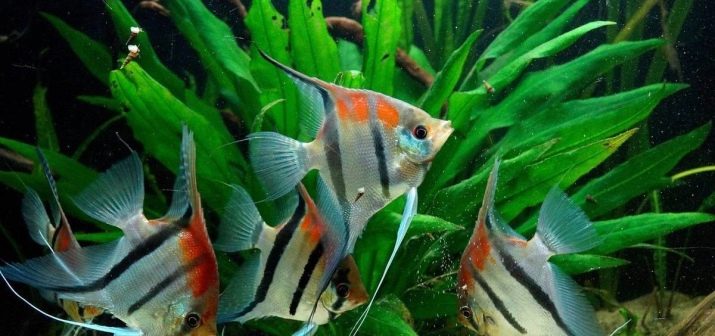
This involves the following requirements:
- a sufficient amount of free space;
- high-quality aeration of water;
- regular tank cleaning;
- regular renewal of water;
- stable and comfortable temperature;
- balanced and nutritious nutrition.
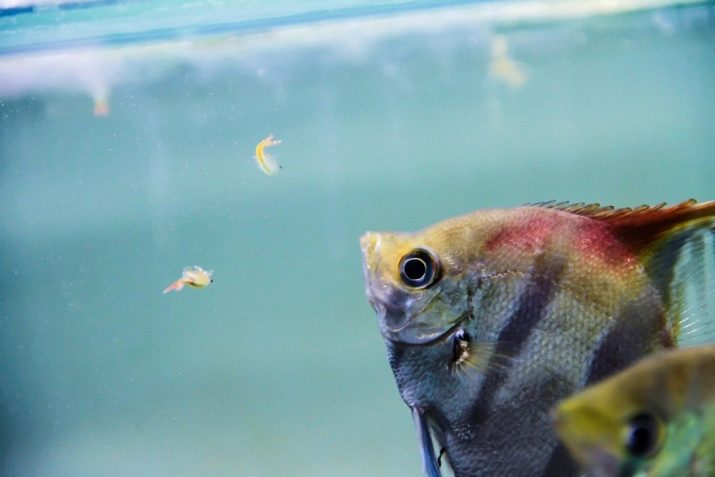
Violation of the rules for keeping fish irreversibly leads to a decrease in their immunity. This, in turn, becomes the cause of the development of diseases and even the mass death of aquarium inhabitants.
No less important is the fact with which fish in the same tank contains scalars. Some representatives of aggressive predatory species do not miss the opportunity to offend the peace-loving scalars, often attacking them, pursuing, damaging their delicate fins.
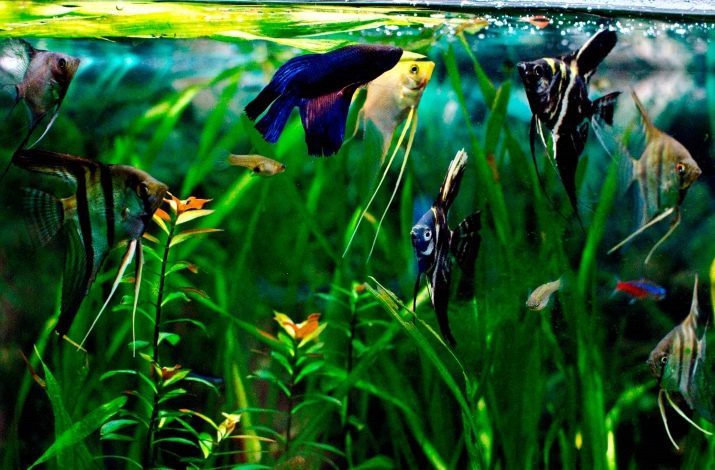
Maintenance and care
Creating a comfortable living environment when keeping scalars is very important. Often, beginner aquarists who neglect the rules for caring for these fish are faced with the development of dwarfism in pets. A fish that is far behind in growth and physical development, in the language of aquarists, is called "drawn out." Such individuals are not able to give full-fledged offspring, they do not grow to the sizes established by their species and breed, and most often die quickly. A similar phenomenon is usually observed with gross violations of the rules for the maintenance of scalars and care for them.
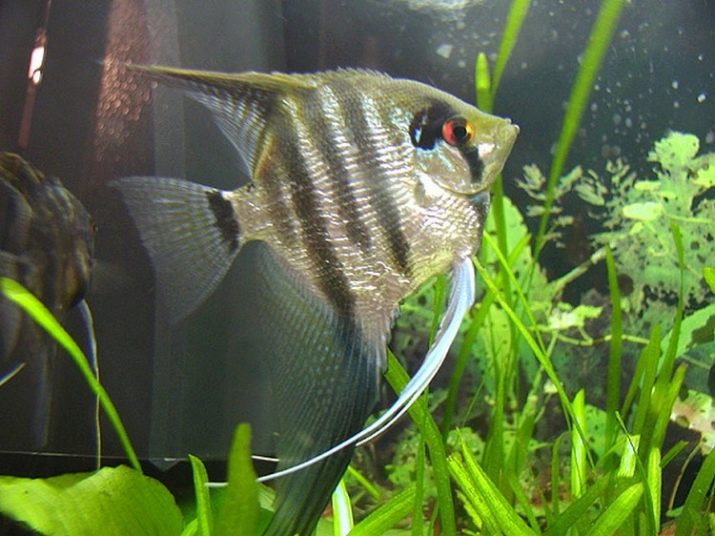
Aquarium volume
Despite the fact that these fish are not hyperactive, they need a spacious aquarium for full development and well-being. Typically, when calculating the volume of a tank, the size of the scalars and their number are based on. A minimum of 1 medium-sized fish (non-melodious) should account for about 30 liters of the total volume of the aquarium.
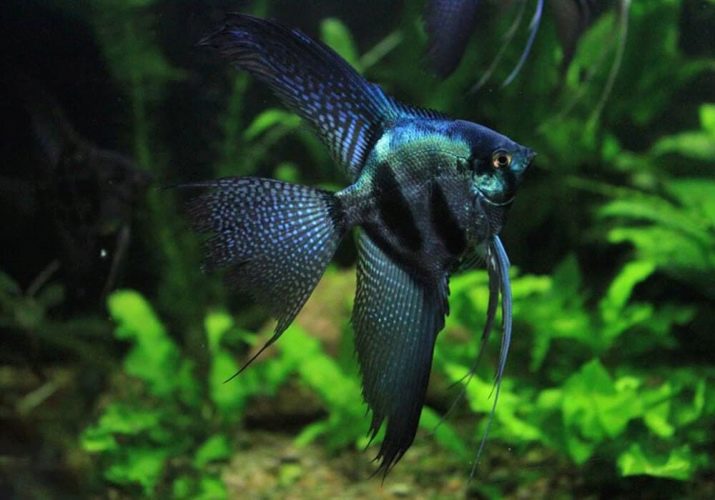
Experienced aquarists recommend the use of tanks with a capacity of 80-100 or more liters to contain several scalars.
In cramped aquariums, the fish will not only feel uncomfortable, but will also begin to conflict with each other.
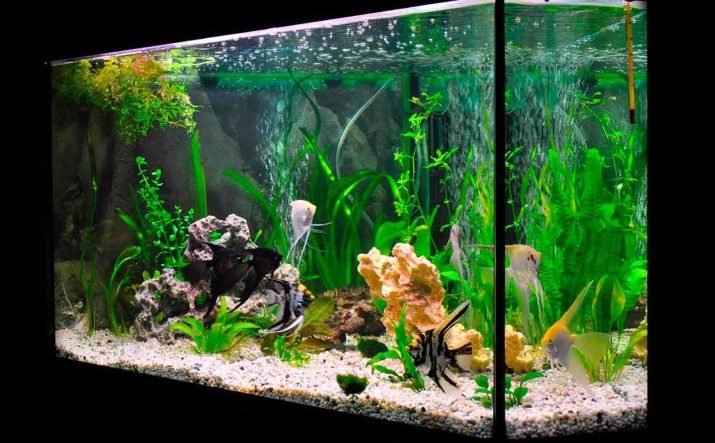
Aeration and water filtration
These exotic creatures painfully tolerate oxygen deficiency and water pollution. To make the scalars feel good in the aquarium, the tank must be equipped with aeration and filtration systems. Experienced aquarists recall that in order to fully enrich the water with oxygen, the compressor must run at least twice a day for 30–40 minutes.
Keeping scalar in aquariums without such systems is strongly discouraged. In this case, the fish will experience constant discomfort and die quickly enough.
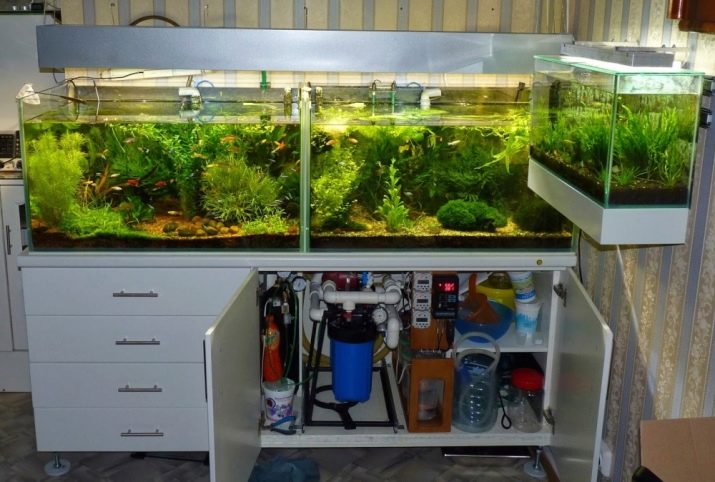
Water renewal
Every week, in the tank where these charming exotic fish are kept, it is necessary to partially renew the water. During this procedure, approximately one third of the water in the home reservoir is updated.
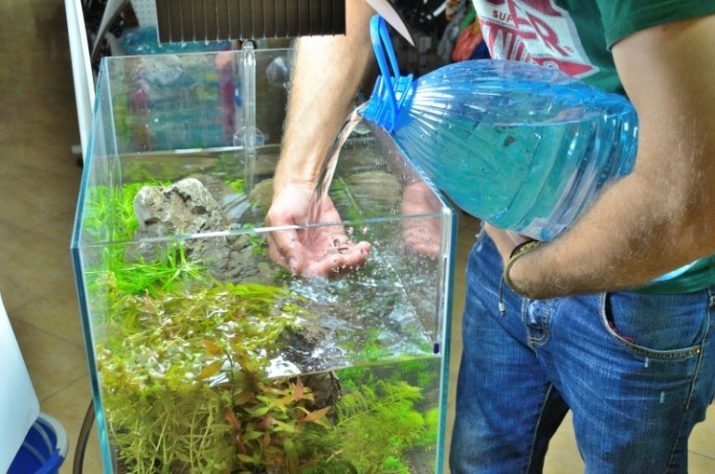
Besides, once a week in the aquarium, you should clean the bottom soil, vegetation and decor items. During cleaning, residual feed, fish waste products, damaged and decaying vegetation fragments, and other debris should be removed from the tank.
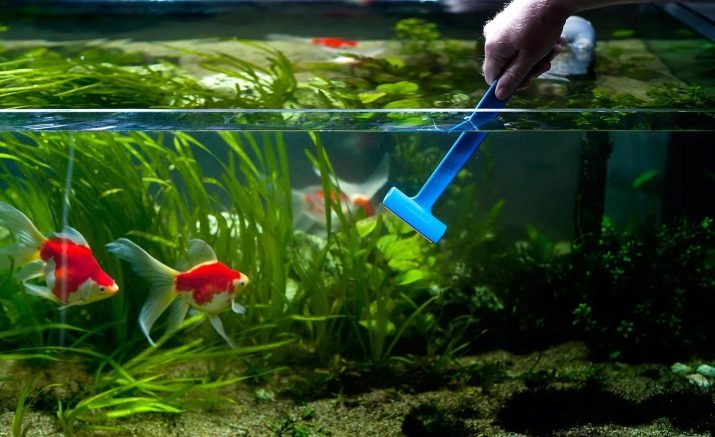
Temperature mode
The exotic origin of the scalar determines their special requirements for the temperature of the water in the tank. To make the fish feel comfortable, it is necessary to maintain the water temperature at the level of 22–26 °. It should be noted that these unpretentious creatures are able to withstand both short-term drops (up to 16 °) and temperature increases (up to 30 °). However, such situations should not be allowed when keeping fish.

Other water parameters:
- optimal stiffness - 9–10 °;
- acidity - 7 pH.

Special attention should be paid to the internal arrangement and design of the aquarium. It should be borne in mind that in the natural habitat, angelfish prefer to hide in dense aquatic plants. In a half-empty aquarium, where there are no living plants, decor and shelters, they will feel uncomfortable.
In thickets of aquatic vegetation, scalars not only hide and eat up the remains of food, but also sleep, even spawn.
Given that these fish are very shy, they need to provide shelter where they can hide if necessary.
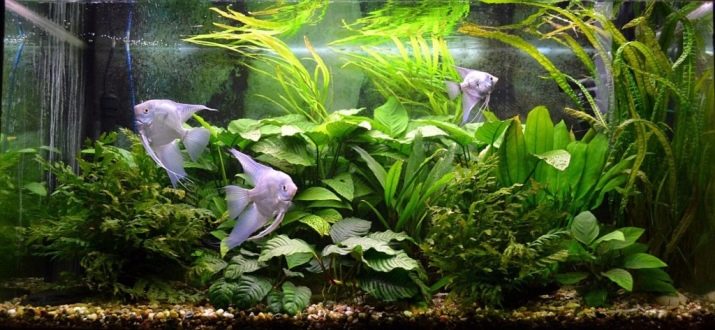
What to feed?
Being typical predators, these elegant creatures are very fond of live food. With great appetite, angelfish eat fresh and frozen bloodworms, cyclops, daphnia, cut or small earthworms, and coronet. They do not neglect and feed of plant origin. So, Experienced aquarists often treat their exotic pets with spinach leaves, fresh lettuce, cucumber slices, seaweed: duckweed or richchia. You can treat the fish with dry food, as well as periodically feed them with spirulina in tablets.

It should be remembered that these creatures have an excellent appetite, often becoming the cause of overeating. So that scalars do not have digestive problems, do not overfeed them. The volume of live, dry or plant food should always be strictly calculated.Leftover food after a meal must be removed from the tank.
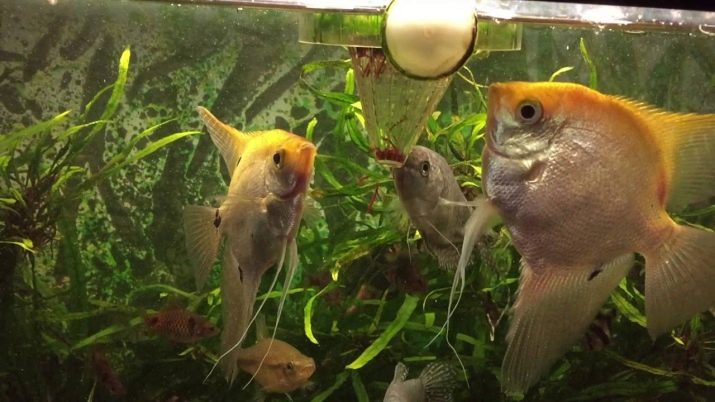
Adults are usually fed 1–2 times a day, young growth is 3 times a day. Occasionally, it is not forbidden to indulge adult fish with protein supplements, for example, seafood grated on fine grater (shrimp, mussel, octopus meat).
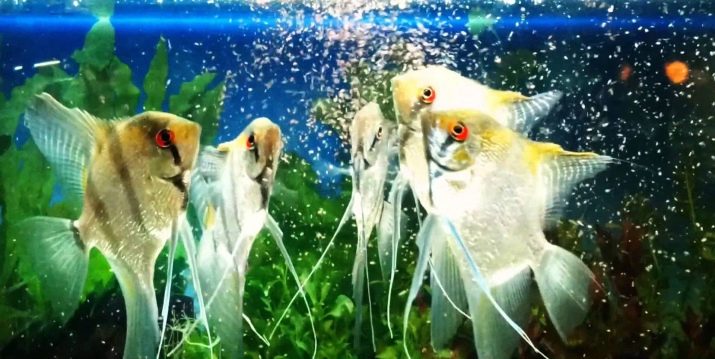
Breeding
Under favorable conditions, these exotic creatures reproduce independently, without outside interference. However, if the fish have been living in the tank for quite some time, but are not in a hurry to acquire offspring, the aquarist can stimulate them to continue procreation.
First you need to select a couple of adult heterosexual individuals from a common aquarium and put them in a tank (with a capacity of 60–70 liters)which will serve as a spawning ground. Algae (for example, cryptocoryne), decor items that are placed at a slight angle, are placed in advance at the bottom of this tank. Later they will serve as a support for fixing the clutch of caviar.
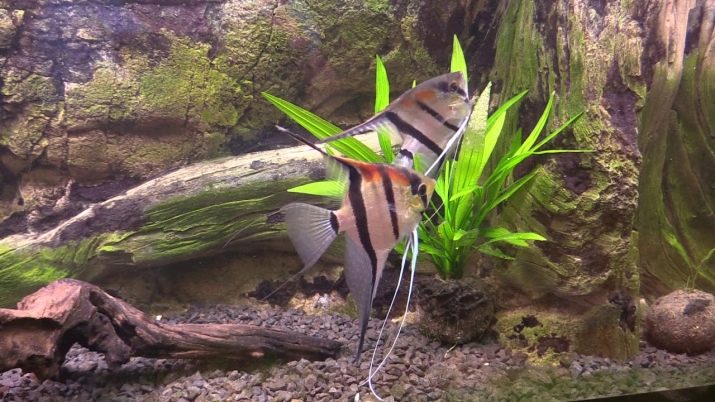
The temperature of the water in the tank is increased to 29 °. Throughout the mating season, you need to feed the fish well and tightly. In the process of spawning, the female will throw eggs on algae leaves or on the surface of decorating objects. After this, the male will only have to fertilize the laying of eggs.
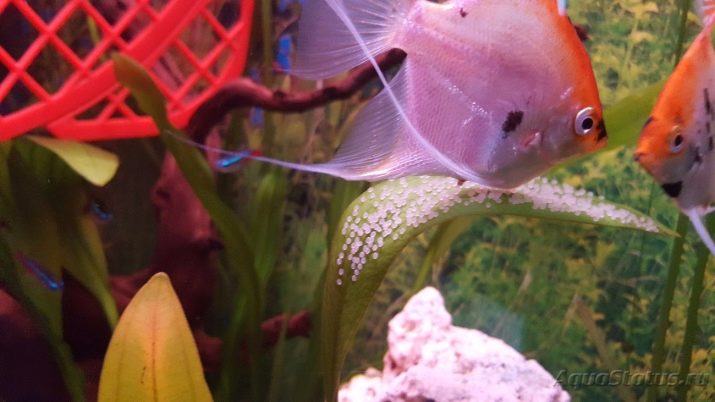
Then the couple can be put back into the general aquarium - in case the aquarist has concerns that the individuals will eat their future offspring. However, many experienced people often leave the parental couple in the tank, giving them the opportunity to take care of their eggs on their own.
While the eggs will be in the incubation stage, which takes 2-3 days, the parent pair will take care of their future offspring. During this period, the fish fan the masonry with fins, supporting easy circulation of water around them, and also remove dead and empty eggs from the masonry.
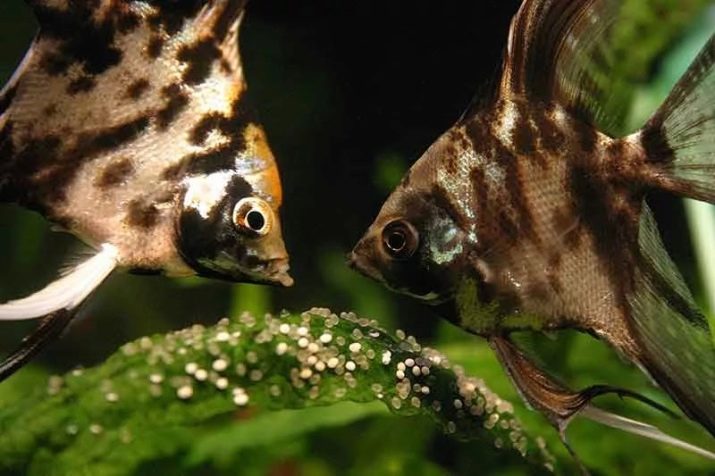
A few days later, tiny angelfish larvae begin to appear from the eggs. At first, they do not eat anything, getting nutrients from the yolk sac. After about a week, it will dissolve, and each larva will turn into a fry.
While the young will grow up, they feed it with an artemia nauplia (very small crustacean larvae). In the absence of nauplii, you can use special prepared feed. The frequency of feeding of young animals should be 3-4 times a day. The amount of food should be such that fry can completely eat it in a few minutes. After eating, the aquarium is cleaned of food debris.
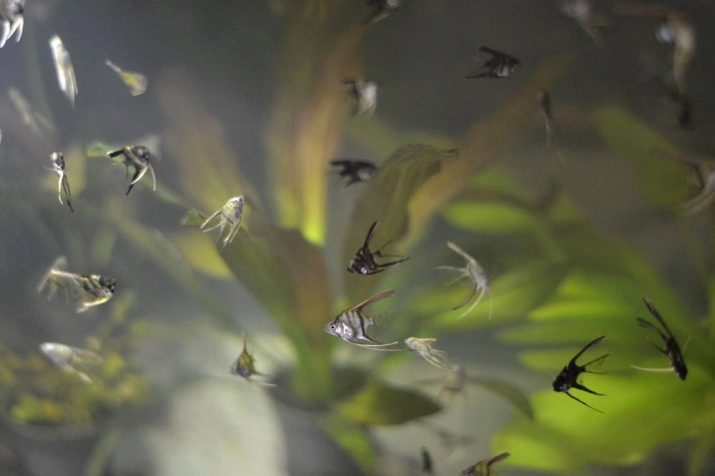
In the event that the parental pair of angelfish was deposited from the spawning grounds, all the responsibility for the future young growth rests on the shoulders of the aquarist. In the aquarium, it is necessary to maintain a stable temperature, monitor the aeration and purity of the water. As a prophylaxis of fungal diseases, methylene blue is added to the water.
This substance will not cause fry and eggs, but it will destroy pathogens of dangerous infections.

Compatible with other fish
The peace-loving nature of scalars allows them to get along with many non-aggressive representatives of the aquarium flora without any special difficulties. So, good neighbors for these exotic fish can be:
- swordsmen;
- Pecilia
- small catfish;
- large zebrafish;
- neons
- gourami;
- molliesia.
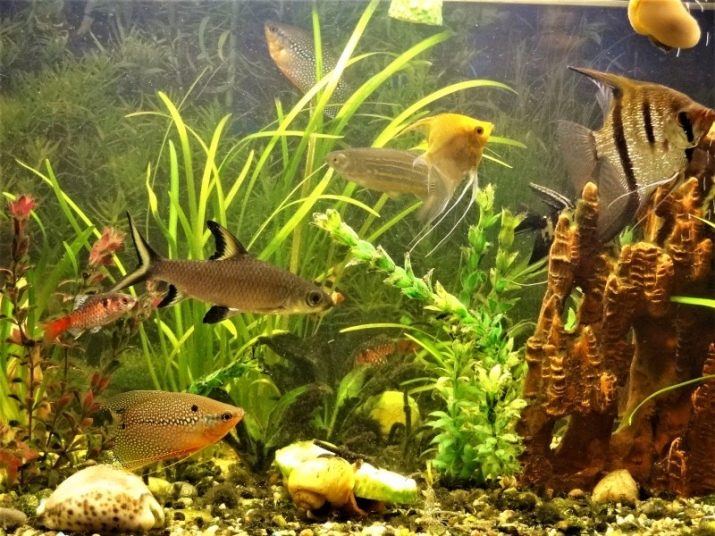
The peaceful coexistence of angelfish with these aquarium fish depends largely on how long they live together in the same tank. It is noted that conflicts between the inhabitants of the aquarium occur less frequently if the fish have long lived with each other. Conversely, scalars may show little aggression towards unfamiliar individuals that have recently appeared in the aquarium.
It is not recommended to keep these exotic beauties together with barbs in one container. This is due to the fact that pugnacious and lively barbs often attack phlegmatic scalars and damage their graceful fins and tail.
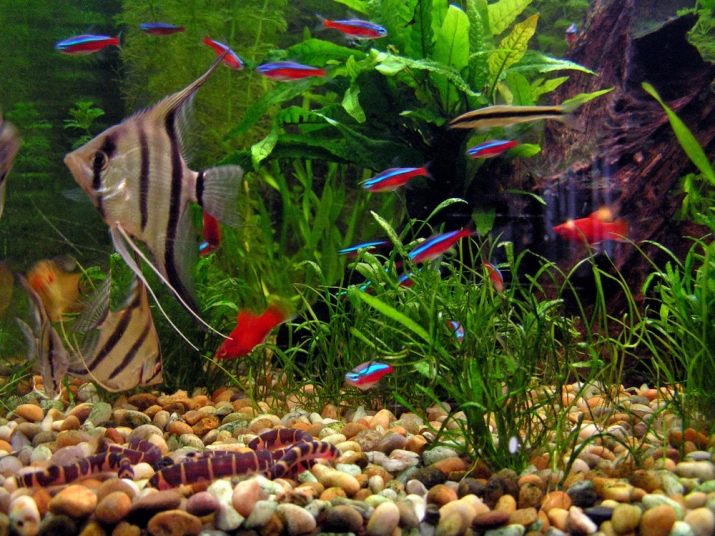
Good-natured guppies are too small for such neighbors. We should not forget that angelfish are predators, therefore, for small harmless fish, they can pose a serious threat. It is strictly not allowed to contain scalar along with large predators: astronotuses, large cichlids, discus. These creatures do not get along with goldfish, which require completely different conditions of detention.

Possible problems
Often, when keeping scalars, inexperienced aquarists encounter different situations in which their pets begin to behave strangely. For example, a fairly common alarming sign is the swimming of a fish on one side. At the same time, the pet can make random movements with fins, breathing heavily and rarely.
One reason for this behavior is overfeeding fish. Angelfish are considered to be very voracious creatures that cannot stop during the absorption of food. In overfed fish, movements slow down, it can fall on one side, lie at the bottom and even swim upside down. This situation can be prevented by correctly calculating the amount of feed.

Very often, scalars, which are very shy creatures, are exposed to stress factors. At the same time, the fish can swim in the aquarium almost vertically (upside down), hide in corners, break into glass or lie down, sinking to the bottom. The shelter or dense green vegetation in which it can hide will allow the pet to survive the stress.
Any signs of strange scalar behavior is a serious reason to immediately check the temperature and water parameters. These sensitive creatures very painfully tolerate changes in the familiar environment: a sharp decrease in temperature, an increase in the level of nitrites and nitrates.
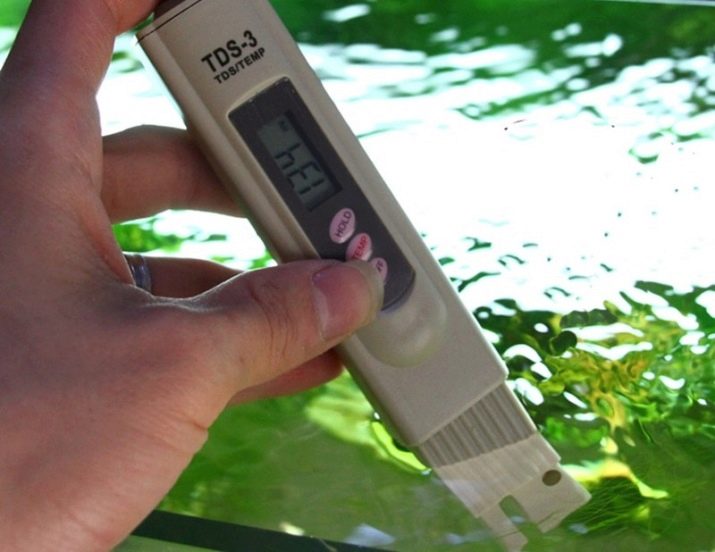
Deterioration in water quality is one of the common causes of poor fish health.
If these peace-loving creatures fight, bite or chase each other (or other inhabitants of the aquarium) for no apparent reason, this may indicate that they became cramped in the tank. Lack of free space encourages fish to conquer every centimeter of area from weaker neighbors.

Often a situation in which a scalar begins to drive other inhabitants of the aquarium indicates that the fish is preparing for spawning. By such behavior, she tries to protect her future offspring from possible sources of danger.
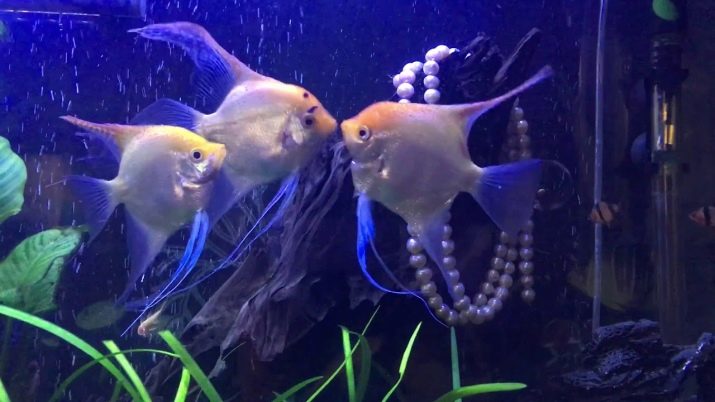
Tips
Experienced aquarists advise choosing high tanks (at least 45 centimeters high) when choosing an aquarium. Considering that the body of these fish is more elongated vertically than horizontally, it will be more comfortable for them in high rather than low tanks.
When arranging an aquarium, attention should be paid to ensure that the fish have the opportunity to move freely in space. For these purposes, it is recommended not to clutter the central part of the tank with decor items.
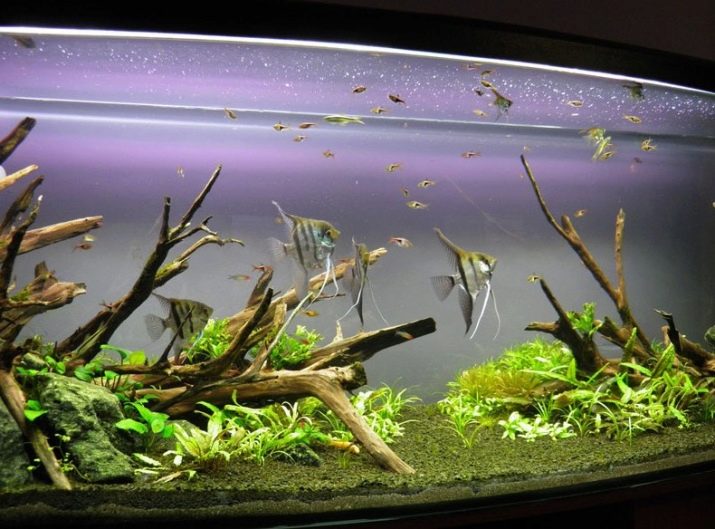
When keeping the scalars, it is worth considering that sometimes these cute creatures can for no reason refuse food. The period of "starvation" they may take from a few days to 2 weeks. This behavior, say experienced aquarists, is normal for these fish.

Taking into account the fact that scalars during mating season are divided into pairs, initially they should be purchased in a flock, in which there are an even number of individuals. This approach will not leave you alone a single fish.
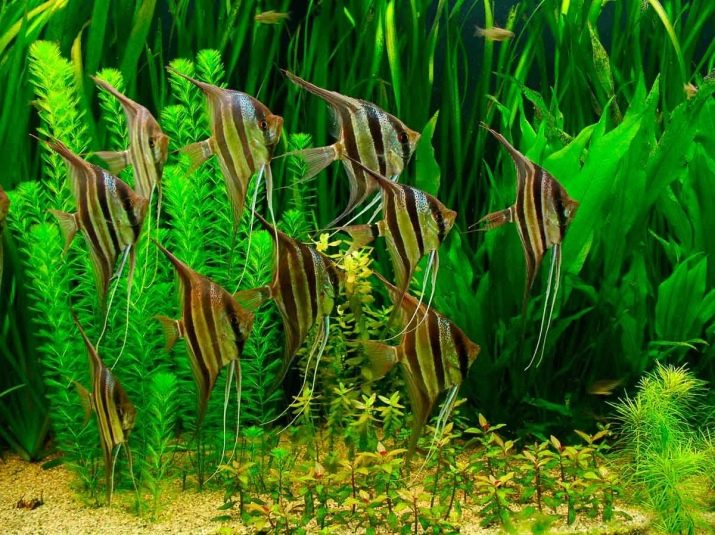
Review Reviews
In the global network you can find many reviews on the content of scalars and care for them in home aquariums.
Most owners note such obvious advantages of these fish: beauty, original appearance, unpretentiousness, a tendency to rapid growth.
The disadvantages, in turn, are the aquarists: difficulties in breeding fish, their voracity, difficulties in maintaining together with some representatives of the aquarium fauna.
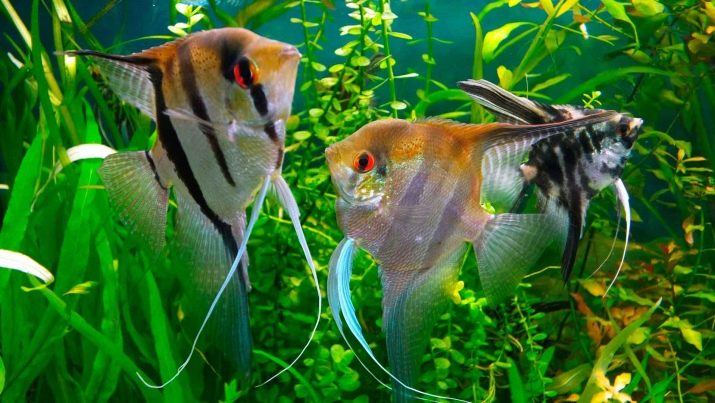
They note that the aquarium with scalars is a worthy decoration of the house. Despite their exotic origin, the fish are unpretentious in maintenance and care, do not require any specific conditions, grow quickly, do not create problems for each other. Angelfish are almost omnivorous: they absorb live and dry food, algae, and vitamin supplements with pleasure.

Other farmers scalar fascinated with its beauty and grace: you can watch them for hours. Unlike many lively fish, striving to jump out of the aquarium, scalars are phlegmatic, measuredly swim in the water column among the algae - this is very calming. The only problem was their breeding. As it turned out, it is not easy for an inexperienced person to complete this task.
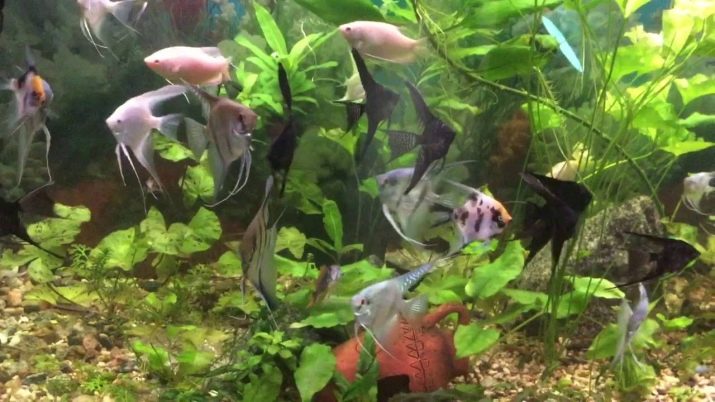
In addition, aquarists note that there are specific nuances in the content of angelfish. Although these fish are considered peaceful, they sometimes conflict with other small inhabitants of the aquarium and can injure them. Because of these characteristics of these beautiful predators, snails and guppies can suffer. Experienced aquarists recommend placing scalars in the same "house" only with commensurate inhabitants such as mollies and pecilia, they do not offend them.
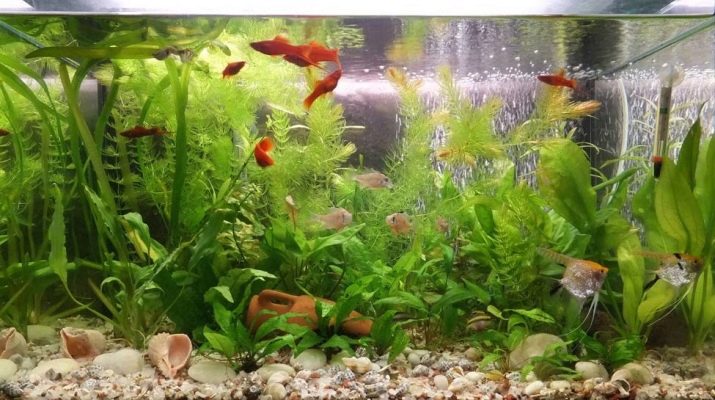
About what types of scalars exist and how to care for them, see the next video.
